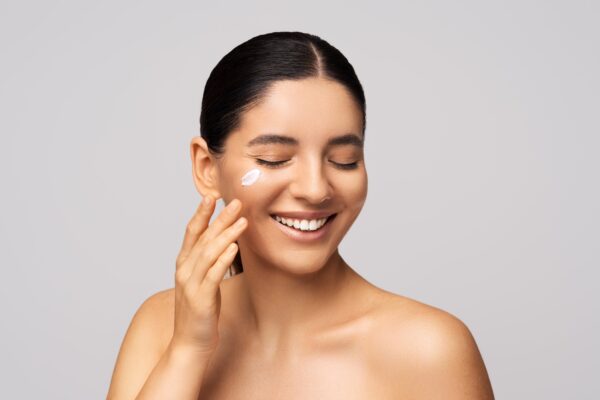A Holistic Approach to Meet Consumers’ Increasingly Values-Based Expectations for Personal Care Product Development
These are transformative times. Appealing to consumers who are increasingly concerned about personal and corporate responsibility regarding big-picture issues – climate change, diversity and inclusion, economics, public health, and more – can easily become a never-ending game of catch-up for consumer packaged goods companies. Nevertheless, for personal care brands, it’s important to stay relevant, to reflect, and to integrate consumers’ evolving priorities with product development and offerings that address their concerns and preferences.
But meeting those needs is more complicated than ever, today. Since most personal care products are frequently replenished or replaced, decisions are made about them on a daily basis. Furthermore, product/brand loyalty can be a major factor in these decisions. Once consumers find a brand that meets their needs, they tend to stick with it – until something better comes along.
While product performance will always be key, image and personal recommendations matter too. Consequently, social media has become a key platform for brand exposure and discussion as people evaluate their options and behaviors. Four powerful issues are increasingly driving consumer priorities in this brave new world of 2022. They include:
- Sustainability
- Diversity and inclusiveness
- Growing preference for “clean” and natural products
- Transparency
Leveraging each of these issues to align product identification with consumer values requires an all-in commitment across product formulation, packaging, and marketing. The good news is that since all of these issues are connected and compatible, one holistic product strategy can be used to address all four concerns.
Let’s walk through the evolution that brought us here. COVID sparked new awareness of an intrinsic “connectedness” between people, industries, and global issues, as we watched the virus spread across the globe via one-to-one personal transmission. During the pandemic, people spent more time at home, contemplating their roles in society, and outdoors, to minimize risk of transmission. Wider appreciation of personal health, family, and the natural environment emerged. A mass examination of personal and societal values grew from fresh perspectives and awareness. Newly aroused interests and concerns became embedded in consumers’ minds, changing the way they select and utilize products – possibly forever.
Connecting the Dots
Meanwhile amid growing evidence of climate change impacts, momentum is building for urgent action to reduce emissions and waste. Product manufacturers are in the hot seat, and consumers are clamoring for more “clean, sustainable and/or natural” products produced by companies that are engaged in positive change.
Also, supply chain disruptions continue to generate a sense of scarcity and highlight the trickle-down effect of a global economy. Today, we understand that a shortage of one raw material (now a common circumstance) can affect product availability across multiple industries and in ways we don’t expect. Consumers are learning to search for alternative products to meet their needs.
In addition, social inequities are increasingly scrutinized – the collective public is looking for signs of inclusivity, both in product development and marketing and in corporate policies, employment, and opportunities. To meet this demand, companies are increasingly offering products specifically designed for diverse demographic groups.
Bottom Line on the Modern Consumer’s Mindset
Eco/socially-conscious shoppers have become far more prevalent; the fringe is narrowing to include consumers with highly specific requirements (e.g., vegan, cruelty-free, etc.), and even those qualities are entering more popularized territory. Now, even mainstream consumers are looking at the products they buy through new lenses. Higher-level values are entering the equation as never before: Is this product good for the environment? Is it healthy for me? Authentic? Natural? Responsible? How can I improve my personal habits to become a better member of society – locally, nationally, and globally?
Also, what about you? As a company whose products I buy, are you doing your part? Are your practices and products in alignment with my values? No one is exempt from responsibility in today’s paradigm of global connectedness. When I buy your product, I know my dollar helps sustain your business, so I want to know that your business is doing the right thing, spending my money to create products that fit my priorities.
One Path Forward Can Create Alignment on Multiple Issues
The issues driving change share a good deal of common ground, all externally focused on a shared responsibility to the greater good. As such, brands have an opportunity to address them all with one holistic strategy. The following steps will guide a successful effort to develop and position personal care products for today’s enlightened consumer:
- Review the ingredients in your product formulations. Discuss improvement and substitution options with chemical and formulary experts.
- Realistically consider trade-offs. Changing ingredients and formulas will likely affect performance, and qualified product development experts can test and identify those effects so you can decide if a change is worthwhile.
- Include environmental, social, and governance (ESG) measurement and reporting in your corporate / brand strategy. These reports are becoming a necessity in the brave new world of 2022. That’s because ESG reporting provides transparency – providing fact-based data to substantiate the brand’s values, backed up with concrete action and examples. That is a cornerstone of trust. You can learn about PLZ Corp’s ESG initiatives and access our ESG report here.
- Work with a team that is knowledgeable about the issues and regulations as well as technical packaging and formulary considerations.
- Consider creating parallel alternatives and sampling options within a brand. For example, a popular hair spray may incorporate a less-than-ideal propellant or ingredient. One shopper may consider specifically related performance characteristics to be non-negotiable and reject the trade-offs inherent in a new formula. Another may want to try a new, more sustainable version, if it is offered. Think about test marketing and sampling programs to establish viability; it may be possible to expand the brand’s appeal with new variations.
These are just a few of the things you can do to ensure your personal care brand is keeping step with the market to earn consumers’ trust and investment. The upshot? A mindful reframing of product attributes and marketing can provide a holistic solution that appeals to today’s more conscious consumers. Don’t get left behind – these trends are not going away. Talk to us at PLZ Personal Care to learn how we can help with you personal care product development and manufacturing.



